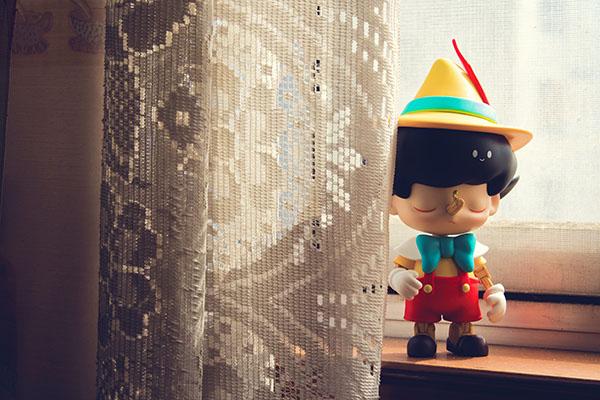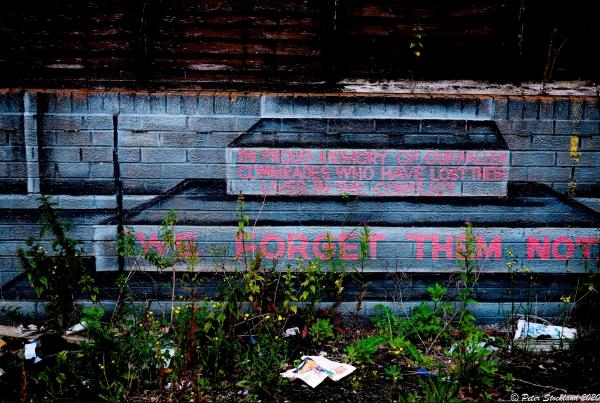A witty friend recently found a parallel in the weakness of Montreal's Champlain Bridge and the fall of Rome.
Although I live to revel in metaphors revealing this city's collapsin infrastructure as harbingers of cultural apocalypse, I think putting all that weight on a single creaky, crumbling, 50-year-old bridge might go a little too far.
It's true that news reports of the Champlain's fractures, fissures, closures, emergency repairs and pending billion-dollar replacement tend to have a kind of end times feel—at least for those who inhabit what was once Canada's most elegant and vibrant city.
To those who don't live here, of course, it matters little that Montreal is an island. Those of us who must daily negotiate arterial routes designed by Byzantine madmen are, alas, never allowed to forget it. The Champlain is our main southern escape hatch, the back door in our Aurelian Wall, so to speak.
It's also true that it's a critical economic link for all Canadians. We are constantly reminded that it is Canada's single busiest span. As Lysiane Gagnon noted succinctly in her column on the Globe and Mail editorial page this week, the bridge accommodates 60 million vehicles, 11 million public transit users and $20 billion in merchandise each year.
Yet without downgrading the importance of a vital bridge that is reportedly poised to fall down, it strikes me (today, anyway) that more compelling comparisons with Rome are found in the sports pages rather than in those parts of the Daily Pump Organ where "real" news is purportedly reported. This is particularly true if we put ourselves through the admittedly rare exercise of imagining the players who play high-level sports—particularly professional sports—as full and actual human beings. When we do so, it is hard to read a great deal of sports reportage without feeling the mystified revulsion that is automatic when we stand in the Roman Colosseum and look down on the ruined field where countless human beings bled and died.
Everyone who has been to Rome, visited the Colosseum, and read the accounts of the uses to which it was put, asks some variation of the questions: How could they do this to each other? How could they have such savagery in their hearts as to so privilege spectacle over suffering?
My great journalistic hero, G.K. Chesterton, said the proof of original sin is the front page of the daily newspaper. Chesterton, a beer-loving trencherman who weighed well over 350 pounds for most of his life, was not noted for his athleticism or interest in things sportive. I believe that today even he would agree the evidence for our distance from God is as much in our games as in any of our other goings-on.
Last week, for example, I read the tale of Washington Redskins quarterback Robert Griffin III, whose professional football career is in jeopardy largely, many believe, because of the way he was treated when seriously injured. Intriguingly, the sport report I read focused on the decline in sales of merchandise with Mr. Griffin's name on it as evidence of how close he might be to the end times of his football life. Sales of his $100 jersey have fallen by half in recent weeks, and a reporter witnessed parents actively steering their children away from purchasing the sweaters because "he's not playing too well and who knows if he'll play well again?"
Mr. Griffin, for the record, is 23 years old.
Last year, he was a hero. He took Washington to the playoffs with his astonishing athleticism. He suffered a devastating knee injury but kept playing with pain and incapacity that was revolting to watch. After surgery that normally requires a year for full recovery, he was rushed back into service this season.
"He should not be playing, and everybody can see it," one of his opponents has said publicly.
It is entirely possible that after this year, he won't be playing ever again. He could well be tossed on the sporting tainted meat heap and quickly forgotten. Did I mention he is only 23 years old?
What is so special about Robert Griffin III's case is that there is nothing at all special about it. It is routine North American entertainment industry practice. Well, it will be argued in some quarters, these players know the risks and negotiate the rich rewards, and no one ever said they have a right to live the way they want without being prepared to pay a price. Doubtless, a similar argument went through Caesar's mind as his thumb hung suspended in the Colosseum air, poised between turning up or turning down, the bridge between a human life or death.






